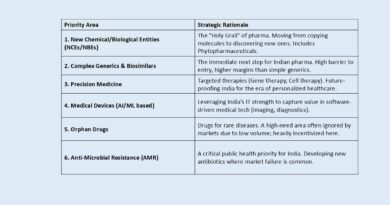International Energy Agency (IEA)
Context:
India signs Strategic Partnership Agreement with International Energy Agency (IEA).The agreement seeks to strengthen mutual trust and cooperation & enhance global energy security, stability and sustainability.
International Energy Agency
- The IEA is a Paris-based autonomous intergovernmental organization established in the framework of the Organization for Economic Co-operation and Development (OECD) in 1974 in the wake of the 1973 oil crisis.
- It was initially dedicated to responding to physical disruptions in the supply of oil, as well as serving as an information source on statistics about the international oil market and other energy sectors.
- At the end of July 2009, IEA member countries held a combined stockpile of almost 4.3 billion barrels of oil.
- They are required to maintain total oil stock levels equivalent to at least 90 days of the previous year’s net imports.
- The IEA acts as a policy adviser to its member states but also works with non-member countries, especially China, India, and Russia.
- The Agency’s mandate has broadened to focus on the “3Es” of effectual energy policy: energy security, economic development, and environmental protection.
Origin of International Energy Agency
The International Energy Agency (IEA) is a grouping of major oil-importing countries which was created in 1974 by the members of the Organization for Economic Cooperation and Development (OECD) at Paris, France, following the Arab oil embargo of 1973 which had resulted in a dramatic rise in oil prices. It was established with a broad mandate on energy security and other issues about energy policy cooperation among the member countries. Long term supply, information transparency, the security of supply, international energy relations, research and development were its focal points.
However, today IEA has expanded and evolved to be at the heart of global dialogue on energy, examining the spectrum of energy issues to advocate policies and ensure affordability, reliability & sustainability of energy among its member countries. It has 30 member nations and only OECD nations are given membership to the IEA. All the OECD member states except for Chile, Iceland, Israel, Mexico and Slovenia are members of IEA. India became an Associate Member of IEA in 2017 while Mexico became the 30th member of IEA in 2018. The other Associate members, apart from India, are China, Brazil, Morocco, Indonesia, Thailand and Singapore.
Objectives of IEA
The International Energy Agency was established with an objective to coordinate the response of the participating states to the world energy crisis along with developing a mechanism for oil-sharing for use during supply difficulties. IEA mainly focuses on its energy policies which include economic development, energy security and environmental protection. These policies are also known as the 3 E’S of IEA.
Greater role play
- The latter has focused on mitigating climate change.
- The IEA has a broad role in promoting alternate energy sources (including renewable energy), rational energy policies, and multinational energy technology co-operation.
India and IEA
India became an associate member of IEA in March 2017 but it was in engagement with IEA long before its association with the organization. India was a party to the Declaration of Cooperation, signed in 1998 which covered the matters relating to energy security and statistics. India had also signed three joint statements with IEA that covered various areas of mutual interest in the energy arena with major focus to gas and oil security.
Some of the benefits provided to India for being an associate member of the IEA are:
- Providing access to India to participate in meetings of working groups, standing groups and committees that constitute the governance structure of IEA.
- Allowing India to take lead in the geopolitical platform on climate and energy issues due to IEA’s increasing role in combating climate change.
- Helping India to take forward the International Solar Alliance framework to other countries through a greater partnership with IEA.
- To help India in achieving its vision of ensuring 24×7 affordable and environment-friendly ‘Power for All’ with increased engagement with IEA.
- To enable India in setting up its own robust integrated database on energy. With India as an associate member, IEA now formally covers 70% of the world’s energy consumption.
Why need a partnership with IEA?
- This partnership will lead to an extensive exchange of knowledge and would be a stepping stone towards India becoming a full member of the IEA.
- India and the IEA members will work as Energy Security, Clean & Sustainable Energy, Energy Efficiency, Enhancing petroleum storage capacity in India, Expansion of gas-based economy in India, etc.
Achievements of the International Energy Agency
Though the threat to the new energy crisis reduced with the global recession, oil glut and increased efficiency, the IEA warned against energy conservation “complacency” in the 1980s. The IEA had been successful in meeting the possible oil crisis in 1990 following the Gulf War by approving a contingency plan which assured ‘security of supply’ by making available additional 2.5 million barrels of oil per day until the completion of Operation Desert Storm. The IEA energy ministers agreed in March 1991 to meet regularly after the Gulf War to discuss environmental concerns and ways to increase energy efficiency with their counterparts in non-IEA countries. In recent years, the IEA has been increasingly involved in the assessment of nuclear issues, as public and governmental support for use of power-generating nuclear reactors has declined.
Reports:
- Global Energy & CO2 Status Report.
- World Energy Outlook.
- World Energy Statistics.
- World Energy Balances.
- Energy Technology Perspectives.
Discover more from Simplified UPSC
Subscribe to get the latest posts sent to your email.



